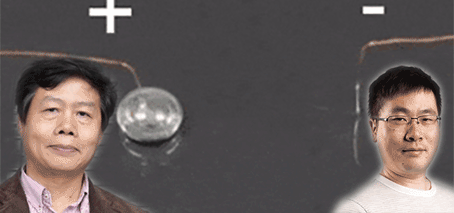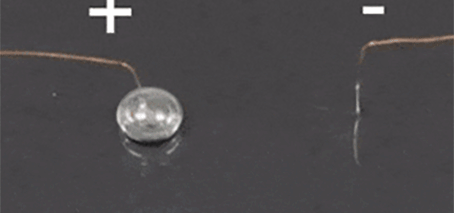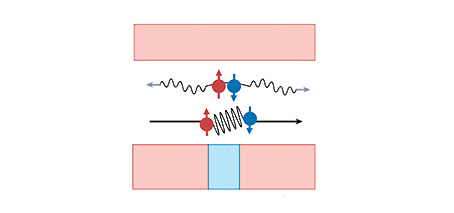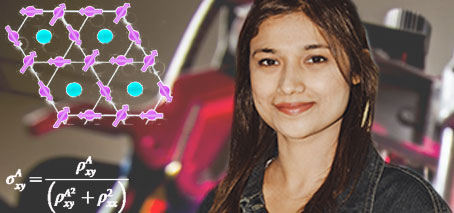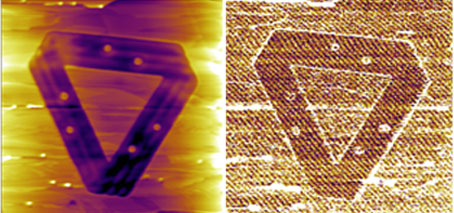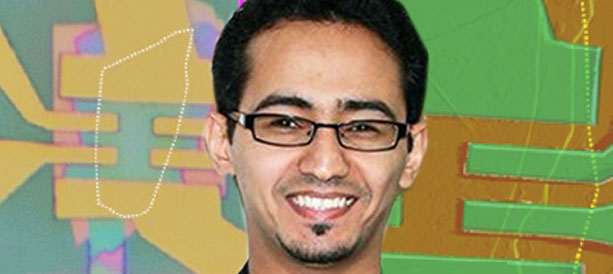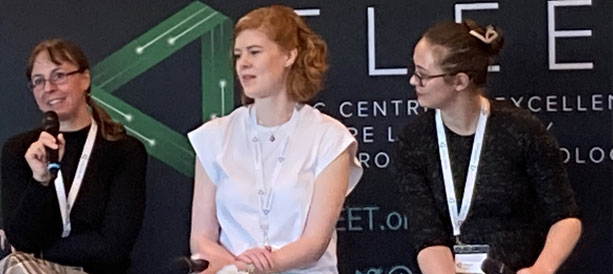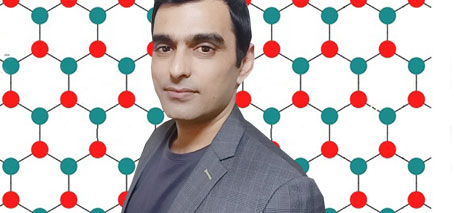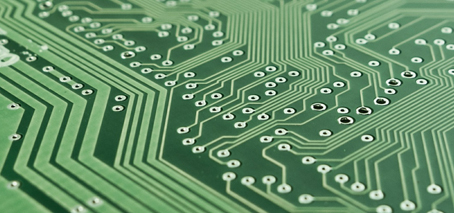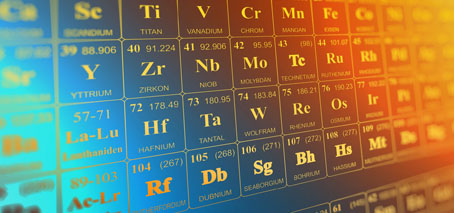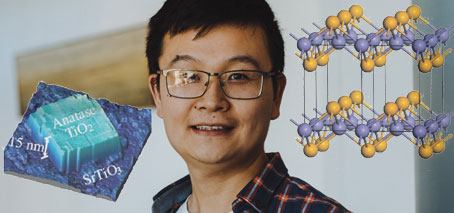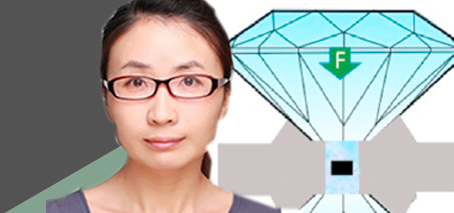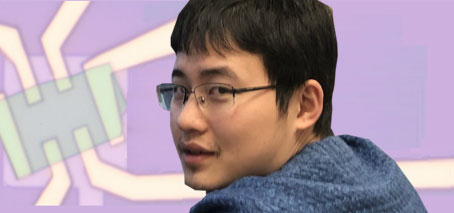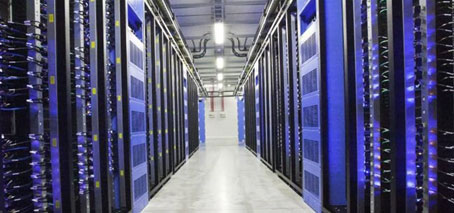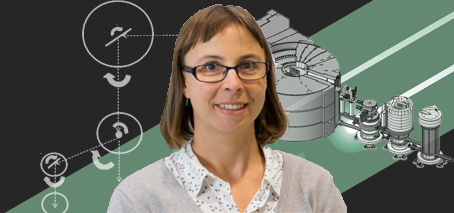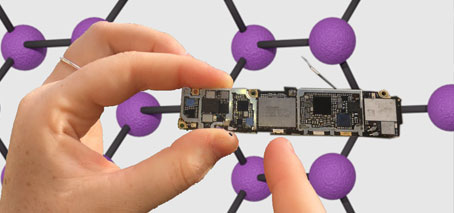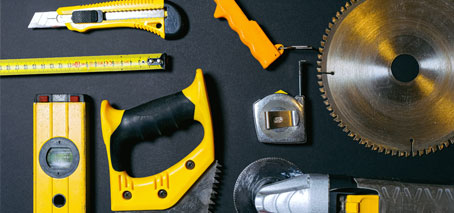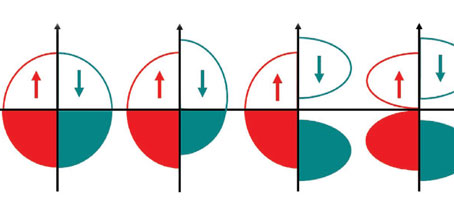University of Wollongong researchers achieved a significant milestone in novel soft-matter transport by demonstrating the transfer of liquid metal from an anode to a cathode without creating a short circuit, defying conventional expectations. The team led by Prof Xiaolin Wang unveils a method where liquid-metal (specifically gallium-based, room temperature liquid metal) anodes can flow towards cathodes with a small electrical …
Pioneering study achieves liquid-metal transfer via electrical current
first published at the University of Wollongong In a ground-breaking discovery, University of Wollongong (UOW) researchers, have reached a new milestone in soft-matter transport. The team, based at the UOW node of the ARC Center of Excellence in Future Low Energy Electronics Technology (FLEET), has successfully demonstrated the transfer of liquid metal from an anode to a cathode without short circuiting, defying …
High-performing n-type thermoelectrics based on bulk porous topological insulators
The Challenge Most of the power used in society is lost to the environment in the form of waste heat. Thermoelectric (TE) modules can convert waste heat gradients into useful electricity via the Seebeck effect. When run in reverse, such modules can also provide active cooling via the Peltier effect. Bi2Te3 is currently the dominant commercial thermoelectric material for Seebeck …
Examining the superconducting diode effect
A collaboration of FLEET researchers from the University of Wollongong and Monash University have reviewed the superconducting diode effect, one of the most fascinating phenomena recently discovered in quantum condensed-matter physics. A superconducting diode enables dissipationless supercurrent to flow in only one direction, and provides new functionalities for superconducting circuits. This non-dissipative circuit element is key to future ultra-low energy …
Visible switching coatings for Smart Windows
The Challenge As urban centres around the world grapple with the dual challenge of rising energy demands and the urgent need to reduce carbon emissions, the integration of smart infrastructure becomes pivotal. A significant amount of a city’s energy is consumed by building heating, cooling, and lighting. Innovations like tint-adjusting windows, heat mirrors, and selective light absorbers can drastically cut …
Topological thermoelectric films with controlled porosity
The Challenge There is a high demand for flexible thermoelectric films that can be incorporated into low-energy electronics to recapture waste heat and enable wearable battery-free devices. High performance thermoelectric materials require high electrical conductivity generally being accompanied by low thermal conductivity. However, these two quantities are typically linked with high electrical conductivity resulting in high thermal conductivity. The challenge …
Alumni profile: Quantum materials researcher Wafa Afzal
A note from previous FLEET PhD candidate Dr. Wafa Afzal, still researching novel materials, now at Archer Materials I was a PhD student at FLEET, based at the University of Wollongong under the supervision of Prof. Xiaolin Wang, studying the electrical and magnetic properties of topological Weyl semimetals. I’m still researching novel materials, now in the Quantum team at Archer …
Combining irradiation and lithography to engineer advanced conducting materials
A process has been developed to engineer nanoscale arrays of conducting channels for advanced scalable electronic circuitry Using ion implantation and lithography, investigators created patterns of topological surface edge states on a topological material that made the surface edges conductive while the bulk layer beneath remained an insulator Low energy ion implantation, neutron and X-ray reflectometry techniques at ANSTO supported …
Turning up the heat on topological thermoelectrics: FLEET Translation funding towards new chemical synthesis
FLEET funding is supporting the next step in possible translation of thermoelectrics research towards commercialisation in future generators, electronics, vehicles, human-wearable and environmental sensors, and smart electronics Thermoelectric materials offer potential solutions to heat-management challenges common to many electronics technologies. Thermoelectrics are solid-state semiconductors that can convert heat gradients into useful electricity (known as the Seebeck effect). They can also …
Manipulating interlayer magnetic coupling in van der Waals heterostructures
Electrical control of exchange bias effect in FePS3-Fe5GeTe2 van der Waals heterostructures via proton intercalations A RMIT-led international collaboration published this week has observed, for the first time, electric gate-controlled exchange-bias effect in van der Waals (vdW) heterostructures, offering a promising platform for future energy-efficient, beyond-CMOS electronics. The exchange-bias (EB) effect, which originates from interlayer magnetic coupling, has played a …
ECR working group deliver at FLEET 2022
FLEET early career researchers and students are taking charge of their professional training and development. For the 2022 FLEET Annual Workshop this month in Wollongong, the working group delivered a range of research development training sessions and created opportunities for their peers to think about future career prospects. FLEET2022 ECR development delivered following the Centre’s three-day annual workshop included: The …
Topological superconductors: fertile ground for elusive Majorana particle
Majorana fermions promise information technology with zero resistance A new, multi-node FLEET review investigates the search for Majorana fermions in iron-based superconductors. The elusive Majorana fermion, or ‘angel particle’ proposed by Ettore Majorana in 1937, simultaneously behaves like a particle and an antiparticle – and surprisingly remains stable rather than being self-destructive. Majorana fermions promise information and communications technology with …
A zigzag blueprint for topological electronics
A collaborative study led by the University of Wollongong confirms switching mechanism for a new, proposed generation of ultra-low energy ‘topological electronics’. Based on novel quantum topological materials, such devices would ‘switch’ a topological insulator from non-conducting (conventional electrical insulator) to a conducting (topological insulator) state, whereby electrical current could flow along its edge states without wasted dissipation of energy. …
Beyond scifi: Manipulating liquid metals without contact
In a landmark discovery, FLEET University of Wollongong (UOW) researchers have realised the non-contact manipulation of liquid metal. The metals can be controlled to move in any direction, and manipulated into unique, levitated shapes such as loops and squares by using a small voltage and a magnet. The liquid metal used is galinstan, an alloy of gallium, indium and tin, …
Negative capacitance in topological transistors could reduce computing’s unsustainable energy load
Australian researchers have discovered that negative capacitance could lower the energy used in electronics and computing, which represents 8% of global electricity demand. The researchers at four universities within the ARC Centre of Excellence in Future Low-Energy Electronics Technologies (FLEET) applied negative capacitance to make topological transistors switch at lower voltage, potentially reducing energy losses by a factor of ten …
Congratulations
FLEET Chief Investigator Prof Kourosh Kalantar-zadeh has been named in the top 1% by citations in his field (cross field) for the fourth year running. Read more. Congratulations also to FLEET AI Torben Daeneke, whose appointment to Associate Professor at RMIT has just been announced. And to UOW’s Zengji Yue who had been appointed an Associate Investigator within FLEET. FLEET AI Sumeet …
Having your cake and eating it too: double-dosing induces magnetism while strengthening electron quantum oscillations in a topological insulator
Harnessing massive Dirac fermions in dual-magnetic-ion-doped Bi2Se3 topological insulator showing extremely strong quantum oscillations in the bulk. Double doping induces a gap for the topological surface state. A University of Wollongong-led team across three FLEET nodes has combined two traditional semiconductor doping methods to achieve new efficiencies in the topological insulator bismuth-selenide (Bi2Se3), Two doping elements were used: samarium (Sm) …
Congratulations Dr Zhi Li, a superconducting Future Fellow
Congratulations to FLEET AI Dr Zhi Li (UOW) who received an ARC Future Fellowship in this month’s announcement. The new ARC Fellowship will support Dr Li’s study of iron-based high-temperature topological superconductors, based at the Institute of Superconducting and Electronic Materials (ISEM) at the University of Wollongong. The topological non-trivial nature and zero resistance of topological superconductors make them very …
Reviewing pressure effects on iron-based high-temperature superconductors
Fe-based superconductors reviewed The discovery of iron-based superconductors with a relatively high transition temperature Tc in 2008 opened a new chapter in the development of high-temperature superconductivity. The following decade saw a ‘research boom’ in superconductivity, with remarkable achievements in the theory, experiments and applications of iron-based superconductors, and in our understanding of the fundamental mechanism of superconductivity. A UOW …
Transforming the layered ferromagnet Fe5GeTe2 for future spintronics
Realizing in-situ magnetic phase transition in metallic van-der-Waals magnet Fe5GeTe2 via ultra-high charge doping A RMIT-led international collaboration published this week has achieved record-high electron doping in a layered ferromagnet, causing magnetic phase transition with significant promise for future electronics Control of magnetism (or spin directions) by electric voltage is vital for developing future, low-energy high-speed nano-electronic and spintronic devices, …
Australian STEM recognised in Shanghai rankings
Great results for STEM in Australian universities in the Shanghai/ARWU 2021 rankings, with Australian universities represented in the world top-100 for all the natural sciences and engineering disciplines except maths. Highlights amongst FLEET’s participating nodes include: Monash and ANU (#28) ranked in the global top 100 for physics UNSW top 40 for electronic engineering Monash, UOW, UNSW and UQ top 100 for material …
Engaging with industry in 2020
FLEET is building links with partners interested in novel electronic devices and systems working towards the overarching goal of creating pathways to translations of research outcomes. Progress towards this important goal in 2020 included: Adding topological transistors to the Institute of Electrical and Electronics Engineers (IEEE) International Roadmap for Devices and Systems Lodging two provisional patents: topological switching (Fuhrer Monash and …
Explainer: Linkage funding for topological-thermoelectricity
A team led by FLEET CI Prof Xiaolin Wang (University of Wollongong) has won a linkage project for topological materials based thermoelectricity. Thermoelectricity can directly convert heat to electrical energy or vice-versa. It plays an important role in renewable and sustainable energy by harvesting waste heat, which is widely available in human body, computer chips, sunlight and steel industry. Thermoelectric …
Thermoelectric devices convert waste heat from industry into viable new energy source
New research supports development of thermoelectric devices to convert waste heat from industry into a viable new energy source Australian industries could benefit from being able to harness the heat by-products from operations Development of advanced materials can sustainably convert waste heat into useful forms of energy to benefit Australia. The work will be undertaken as part of an Australian …
Topological materials beat Boltzmann’s tyranny: Surpassing lower limit on computing energy consumption
Topological insulators can reduce transistor switching energy by a factor of four Defeating Boltzman’s tyranny, which puts a lower limit on operating voltage New FLEET research confirms the potential for topological materials to substantially reduce the energy consumed by computing. The collaboration of FLEET researchers from University of Wollongong, Monash University and UNSW have shown in a theoretical study that …
Tools of the Trade: Zengji Yue explains ion intercalation for new Nature series
Inserting ions into, or between, atomically-thin materials can be used to alter their properties in a finely-controlled fashion. For example, graphene’s properties can be fine-tuned by injection of another material (a process known as ‘intercalation’) either underneath the graphene, or between two graphene sheets. (See article.) “Intercalating ions into layered materials increases the spacing and decreases the coupling between the …
Game-changer in thermoelectric materials: decoupling electronic and thermal transport
new thermoelectric materials could unlock body-heat powered personal devices, such as wrist-watches A new University of Wollongong study overcomes a major challenge of thermoelectric materials, which can convert heat into electricity and vice versa, improving conversion efficiency by more than 60%. Current and potential future applications range from low-maintenance, solid-state refrigeration to compact, zero-carbon power generation, which could include small, …
ARC funding for FLEET investigators
Australia’s Minister for Education Dan Tehan announced $280 million in funding for new research collaborations to start next year. This month’s ARC Discovery Project and Linkage Project funding announcement includes eight grants for projects and facilities led by or involving FLEET researchers. While these projects are distinct from FLEET’s mission to build low-energy electronics, they testify to the capacity FLEET …
Next-generation multi-state data storage: leaving binary behind
International collaboration reviews future data-storage technology that steps ‘beyond binary’, storing more data than just 0s and 1s Electronic data is being produced at a breath-taking rate. The total amount of data stored in data centres around the globe is of the order of ten zettabytes (a zettabyte is a trillion gigabytes), and we estimate that amount doubles every couple …
Reviewing the Quantum Anomalous Hall Effect (QAHE)
Quantum anomalous Hall effect (QAHE)-materials reviewed Magnetic topological insulators and spin-gapless semiconductors A collaboration across three FLEET nodes has reviewed the fundamental theories underpinning the quantum anomalous Hall effect (QAHE). QAHE is one of the most fascinating and important recent discoveries in condensed-matter physics. It is key to the function of emerging ‘quantum’ materials, which offer potential for ultra-low energy …
- Page 1 of 2
- 1
- 2

